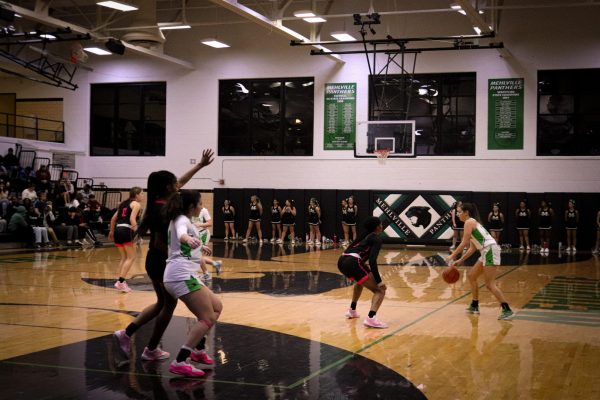The Problem With Dress Code

Photo by iStock Photos
Female students are finding it difficult to find clothes that adhere to the dress code.
For a long time, schools have been debating about the dress code and making changes to it to keep up with fashion trends. Students, especially girls, have been victims of these policies for years now. Maybe it’s time we revise the dress code or possibly, get rid of it altogether.
The dress code policy at Mehlville includes reasonable guidelines like requiring students to wear some type of footwear and prohibiting shirts that display drug or gang-related messages. It states clothing should be clean and sanitary, as well.
It also highlights Title IX, a law that prevents discrimination, based on sex, or exclusion from participation in any education program or activity that receives Federal funding. According to Mehlville School District and the Department of Education, you can’t be dress-coded based on your sex.
So if the school and the government prohibit discrimination based on sex, then why is it that the dress code being implemented at school feels geared way more towards girls than boys? Well, that’s one of the reasons why the dress code is so disliked by Mehlville’s students. It seems unfair, controlling and unnecessary.
“If people are getting ‘distracted’ by how someone is dressed, the problem is not the student wearing the ‘distracting’ clothes, but the student who is distracted,” said Grace Dietrich, freshman at Mehlville.
While the district hasn’t explicitly used the word “distracting”, some students feel this is the reason why they are being dress-coded. The dress code, while not explicitly geared toward girls, is usually used against girls who get dress-coded the most. This can make the girl getting dress-coded feel like she was at fault and that she should blame herself for how others perceived her clothing.
There seems to be this double standard with the dress code. It makes it so that while it’s being applied to all students, only girls are the victims of this policy. This might not be just a coincidence.
Most women’s clothing stores only carry shorts that don’t pass the fingertip test. A lot of women’s clothing, especially during the summertime, is off-the-shoulder or with tiny straps. It’s difficult for women to find clothes that adhere to the dress code. For boys, their shorts are long and pass the test just fine. Even though most teachers aren’t even around policing boys’ clothing.
The dress code isn’t just one-sided with boys and girls. It even affects girls with different body types. If a small, skinny girl wears a low-cut top, she probably won’t get dress-coded. If a curvier girl with a bigger bust were to wear the same top, she’d be dress-coded immediately.
We shouldn’t be controlling what students wear. Of course, there are certain things that are inappropriate in schools like a t-shirt with a marijuana leaf on it, but a pair of shorts is not a good enough violation for a girl to be taken out of class, disrupting her education, and for her to feel like her body was somehow wrong because somebody saw her gym clothes as sexual.
More often than not, girls hear, “Be careful what you wear, you don’t want to be sending the wrong message.” While it’s meant with good intentions, it creates an atmosphere where if a girl was dress-coded or even sexually assaulted, she’s more likely to blame herself because she was “asking for it” with her clothing.
Most girls worry about getting dress-coded but I don’t have as big of a problem because I wear a hijab. My hijab technically isn’t allowed on campus because of the hats and hoods policy. I get a pass though because it’s for religious reasons and because the school recently allowed hats and head coverings with teacher’s consent. Other girls don’t have that luxury.
There’s a section in the school’s dress code policy that states that “dress and grooming will not disrupt the educational environment.” This, as well as many other policies, is vague and leaves room for interpretation of what is disruptive.
“This is the rule that’s being used and abused by the people doing the dress coding because they can say that anything is [disruptive],” said Kylie Wheaton, junior.
Women are in control of their own bodies and that means we should have the right to choose to cover from head to toe or wear a crop-top and shorts without criticism or fear of being sent home to change. Women’s bodies are being thrown into the same category as cell phones and hats. Our bodies are not disruptions in the classroom.

Samra Selimovic is starting her second year as a junior in journalism. She is interested in reporting her opinions on current events and writing features...







